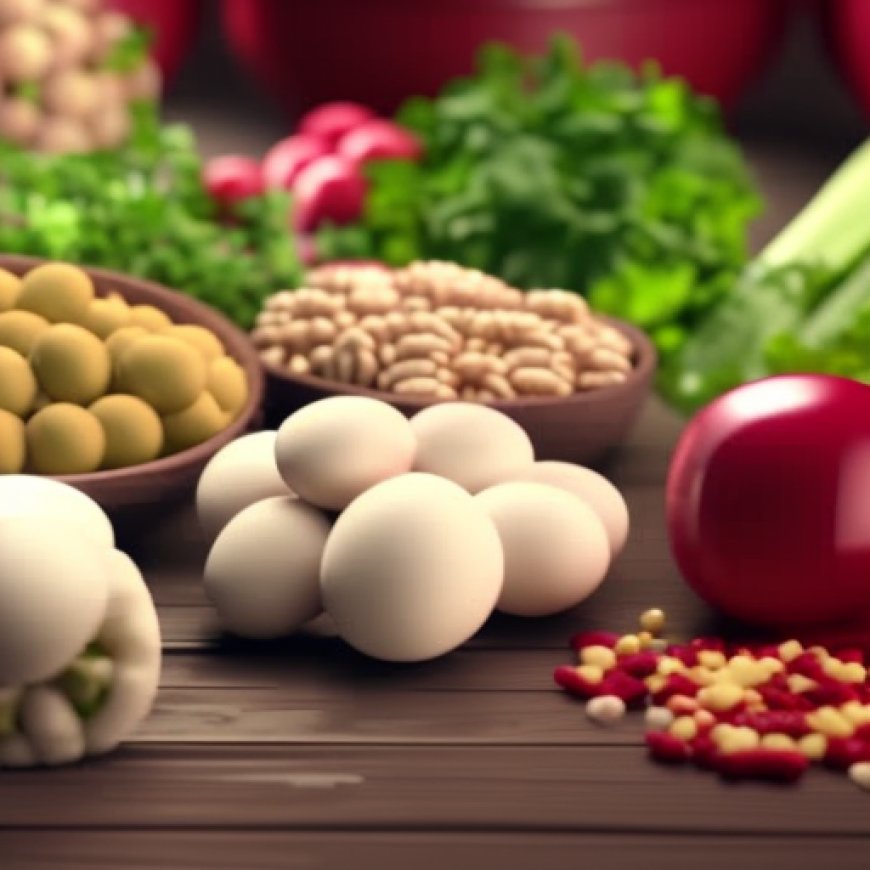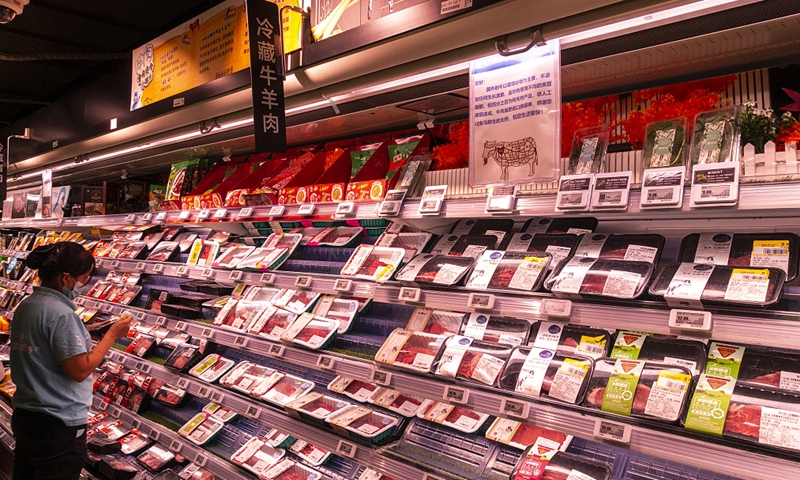China expands access for imported food, agricultural products, fostering globally shared market
China expands access for imported food, agricultural products, fostering globally shared market Global Times


China Expands Agricultural and Food Product Market Access, Creating Development Opportunities

Imported beef is sold in a supermarket in Shanghai. Photo: VCG
Introduction
China continues to expand its agricultural and food product market access, fostering a globally shared market and generating new development opportunities for the world. As part of recent developments in the sector, 38 Brazilian meat enterprises were granted export qualifications for China, as announced by the General Administration of Customs (GAC).
Promoting High-Quality Imports
China is promoting high-quality imports alongside its growing domestic production and consumption capabilities, Wang Lingjun, a vice minister of the GAC, said on Tuesday during a press conference.
“In 2023, China approved imports of 146 agricultural and food products from 51 countries and regions,” Wang noted.
China is adopting an opening-up policy for international high-quality products. From New Year’s Day to the Spring Festival this year, China had imported more than 1.25 million tons of edible oil, 1.1 million tons of fruits and nuts, and 850,000 tons of meat, said Wang.
As China advances its opening-up policies, more and more foreign brands are seizing the immense opportunities presented by China’s vast market potential. The trend has led to an increasing number of international brands expanding within the Chinese market, Zhu Danpeng, a veteran food industry analyst, told the Global Times on Tuesday.
Import of High-Quality Agricultural Products
The GAC has continued broadening the import of high-quality agricultural products, enhancing China’s position as an open and gigantic market.
In a recent move, the GAC approved pork imports from Austria on Friday, with detailed regulations on the products, production enterprises, and quarantine requirements.
The action followed a GAC announcement in late February to lift a ban on Spanish beef imports. The ban started in 2000 due to multiple cases of “mad cow” disease reported in the EU.
“Imported high-quality agricultural and food products not only meet domestic consumption demand but also push domestic industries toward high-quality development,” said Zhu, noting that importing premium foreign agricultural and food products could help upgrade China’s own food industry, integrating international brands and quality into the Chinese market.
Broadening Import Spectrum
Beyond agricultural and food products, China’s import spectrum is broadening, offering new development opportunities for the world.
In the first two months of 2024, China’s imports spanned more than 200 countries and regions, with significant growth from Central Asia, up 13.4 percent year-on-year. Imports from Latin America increased 11.3 percent and those from Africa increased 7.9 percent, according to the GAC.
“Imports of integrated circuits, metal ores and crude oil have also seen substantial growth, showing China’s commitment to providing a growing market, investment, and cooperation opportunities globally,” Wang said.
SDGs, Targets, and Indicators
| SDGs | Targets | Indicators |
|---|---|---|
| SDG 2: Zero Hunger | Target 2.3: By 2030, double the agricultural productivity and incomes of small-scale food producers, in particular women, indigenous peoples, family farmers, pastoralists, and fishers, including through secure and equal access to land, other productive resources and inputs, knowledge, financial services, markets, and opportunities for value addition and non-farm employment. | Indicator 2.3.1: Volume of production per labor unit by classes of farming/pastoral/forestry enterprise size |
| SDG 8: Decent Work and Economic Growth | Target 8.1: Sustain per capita economic growth in accordance with national circumstances and, in particular, at least 7 percent gross domestic product growth per annum in the least developed countries. | Indicator 8.1.1: Annual growth rate of real GDP per capita |
| SDG 12: Responsible Consumption and Production | Target 12.2: By 2030, achieve the sustainable management and efficient use of natural resources. | Indicator 12.2.1: Material footprint, material footprint per capita, and material footprint per GDP |
| SDG 17: Partnerships for the Goals | Target 17.11: Significantly increase the exports of developing countries, in particular with a view to doubling the least developed countries’ share of global exports by 2020. | Indicator 17.11.1: Developing countries’ and least developed countries’ share of global exports |
1. Which SDGs are addressed or connected to the issues highlighted in the article?
- SDG 2: Zero Hunger
- SDG 8: Decent Work and Economic Growth
- SDG 12: Responsible Consumption and Production
- SDG 17: Partnerships for the Goals
2. What specific targets under those SDGs can be identified based on the article’s content?
- Target 2.3: By 2030, double the agricultural productivity and incomes of small-scale food producers.
- Target 8.1: Sustain per capita economic growth in accordance with national circumstances.
- Target 12.2: By 2030, achieve the sustainable management and efficient use of natural resources.
- Target 17.11: Significantly increase the exports of developing countries.
3. Are there any indicators mentioned or implied in the article that can be used to measure progress towards the identified targets?
- Indicator 2.3.1: Volume of production per labor unit by classes of farming/pastoral/forestry enterprise size.
- Indicator 8.1.1: Annual growth rate of real GDP per capita.
- Indicator 12.2.1: Material footprint, material footprint per capita, and material footprint per GDP.
- Indicator 17.11.1: Developing countries’ and least developed countries’ share of global exports.
4. SDGs, Targets, and Indicators
| SDGs | Targets | Indicators |
|---|---|---|
| SDG 2: Zero Hunger | Target 2.3: By 2030, double the agricultural productivity and incomes of small-scale food producers, in particular women, indigenous peoples, family farmers, pastoralists, and fishers, including through secure and equal access to land, other productive resources and inputs, knowledge, financial services, markets, and opportunities for value addition and non-farm employment. | Indicator 2.3.1: Volume of production per labor unit by classes of farming/pastoral/forestry enterprise size |
| SDG 8: Decent Work and Economic Growth | Target 8.1: Sustain per capita economic growth in accordance with national circumstances and, in particular, at least 7 percent gross domestic product growth per annum in the least developed countries. | Indicator 8.1.1: Annual growth rate of real GDP per capita |
| SDG 12: Responsible Consumption and Production | Target 12.2: By 2030, achieve the sustainable management and efficient use of natural resources. | Indicator 12.2.1: Material footprint, material footprint per capita, and material footprint per GDP |
| SDG 17: Partnerships for the Goals | Target 17.11: Significantly increase the exports of developing countries, in particular with a view to doubling the least developed countries’ share of global exports by 2020. | Indicator 17.11.1: Developing countries’ and least developed countries’ share of global exports |
Behold! This splendid article springs forth from the wellspring of knowledge, shaped by a wondrous proprietary AI technology that delved into a vast ocean of data, illuminating the path towards the Sustainable Development Goals. Remember that all rights are reserved by SDG Investors LLC, empowering us to champion progress together.
Source: globaltimes.cn

Join us, as fellow seekers of change, on a transformative journey at https://sdgtalks.ai/welcome, where you can become a member and actively contribute to shaping a brighter future.







